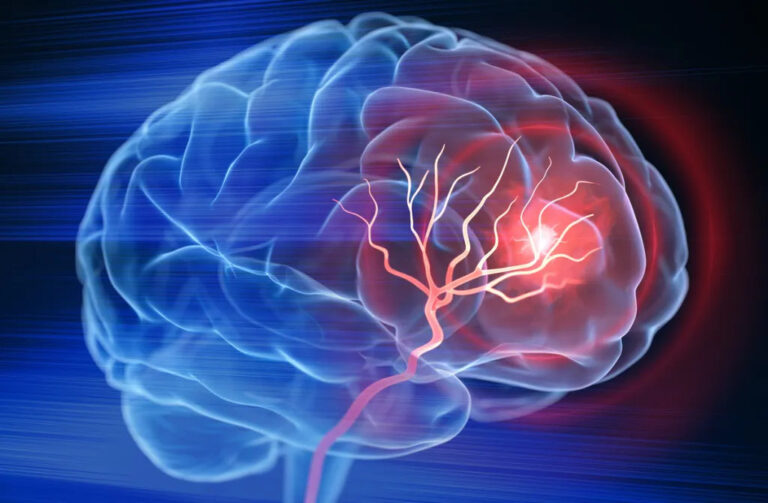Is Modafinil Linked to Panic Attacks? A Simple Guide to What Science Says
Modafinil is a wakefulness medicine approved for narcolepsy, obstructive sleep apnea, and shift work sleep disorder. Many people also hear about it for off-label focus or energy. Some patients worry it might cause panic attacks. Here is what high-quality sources say, explained in clear terms and cited in the text.
What is modafinil and what is it approved for
Modafinil is a wakefulness-promoting medicine. It is approved for narcolepsy, obstructive sleep apnea, and shift work sleep disorder. It is taken as a tablet, usually 200 mg once daily, with lower doses used in some patients based on age, liver function, or other factors (U.S. Food and Drug Administration, 2015).
Some people take it off label for fatigue or concentration. Off-label means a use not evaluated or approved by the U.S. Food and Drug Administration. For off-label uses, benefits and risks are less certain (Greenblatt & Adams, 2023).
Can modafinil cause panic or anxiety
The most consistent human data come from clinical trials and the official label. In trials, anxiety and nervousness were common adverse reactions. About 1 percent of adults in controlled studies stopped the drug because of anxiety or nervousness. Insomnia and agitation were also reported. Postmarketing reports include mania, hallucinations, delusions, aggression, and suicidal ideation, usually in people with a psychiatric history. The label advises caution and close monitoring in anyone with past psychosis, depression, or mania (U.S. Food and Drug Administration, 2015).
Panic attacks are not named specifically on the label. However, a sudden surge of anxiety with palpitations, shortness of breath, dizziness, and fear can overlap with panic symptoms. If anxiety escalates rapidly, a person may experience a panic-like episode. That is why new or worsening anxiety on modafinil should be taken seriously (U.S. Food and Drug Administration, 2015; Cackovic et al., 2023).
Why could modafinil raise anxiety in some people
Scientists think modafinil increases dopamine by blocking the dopamine transporter. It also appears to affect norepinephrine, orexin, histamine, and glutamate pathways that increase alertness. Some of these findings are from animal research. Reduced gamma-aminobutyric acid, which usually calms brain activity, has also been observed in animal studies. All of these changes can raise arousal, which may feel like anxiety to some people, especially at higher doses or in sensitive patients (Greenblatt & Adams, 2023).
Animal work shows modafinil can stimulate hypothalamic circuits involved in stress regulation. In a rat model of posttraumatic stress, modafinil changed activity in pathways linking neuropeptide Y, orexin, and the stress hormone system. This supports biological plausibility for anxiety effects in humans, although animal results do not prove human panic risk (Cohen et al., 2016).
Who may be at higher risk for anxiety or panic-like reactions
People are more likely to run into problems if they have the following:
- A history of mood or psychotic disorders, such as depression, bipolar disorder, or psychosis, where caution is advised and monitoring is needed (U.S. Food and Drug Administration, 2015).
- Higher total daily doses, for example more than the usual 200 mg, which can increase central nervous system side effects in general (U.S. Food and Drug Administration, 2015).
- Concomitant stimulants or substances that disrupt sleep, which can compound arousal or insomnia (U.S. Food and Drug Administration, 2015).
- Preexisting anxiety or panic disorder, since added arousal can be uncomfortable and may trigger attacks, even though direct human data for modafinil-induced panic are limited (Cackovic et al., 2023).
What symptoms should lead you to call your clinician
Call your prescriber if you notice any of the following after starting or changing your dose:
- New or worsening anxiety, restlessness, or agitation
- Trouble sleeping that does not improve with timing adjustments
- Fast heartbeat, chest discomfort, shortness of breath, or dizziness
- Hallucinations, delusions, severe mood changes, or thoughts of self-harm
These symptoms are reasons to reassess the dose, timing, or whether modafinil is right for you. The label recommends stopping the medicine if serious psychiatric symptoms develop (U.S. Food and Drug Administration, 2015).
Practical tips to lower risk
- Use modafinil only under medical supervision. Start with the lowest effective dose and avoid self-escalation (U.S. Food and Drug Administration, 2015).
- Take it early in the day to reduce insomnia. For shift work disorder, take it about one hour before the shift as directed on the label (U.S. Food and Drug Administration, 2015).
- Share your mental health history with your prescriber. Ask about alternative options if you have anxiety sensitivity.
- Track symptoms for the first two to four weeks. Keep notes on sleep, heart rate sensations, and anxiety.
- Avoid mixing with other stimulants unless your clinician agrees.
How does this fit with studies showing mood benefits
Some small and older clinical reports found that modafinil improved energy and mood in people with depression, with a range of doses. These were not large randomized trials, and they do not rule out anxiety reactions in others. The takeaway is that responses vary, and careful individual monitoring is important (Price & Taylor, 2005).
Understanding panic attacks versus anxiety
A panic attack is a sudden peak of intense fear that reaches a maximum within minutes and includes symptoms such as palpitations, chest discomfort, shortness of breath, dizziness, chills or heat, numbness or tingling, derealization or depersonalization, fear of losing control, or fear of dying. Panic disorder is diagnosed when recurrent unexpected attacks are followed by persistent concern or behavior change for at least one month. Panic attacks can also be substance induced, including by medicines that increase arousal. Accurate diagnosis and treatment planning require a clinician evaluation (Cackovic et al., 2023).
FAQ
Can I take modafinil if I already have panic disorder
Talk to your clinician first. Some patients with panic disorder tolerate modafinil, but others feel more anxious. Because anxiety, agitation, and insomnia can occur, close monitoring and the lowest effective dose are important. New or worsening panic should prompt a recheck of the plan (U.S. Food and Drug Administration, 2015; Cackovic et al., 2023).
Does modafinil directly cause panic attacks
Panic is not listed by name on the label. Anxiety, nervousness, and insomnia are listed, and these can trigger panic-like episodes in sensitive people. If you feel a rapid surge of fear with intense body symptoms, contact your prescriber promptly (U.S. Food and Drug Administration, 2015; Cackovic et al., 2023).
What dose is safest for avoiding anxiety
There is no one dose that fits everyone. Many adults start at 100 to 200 mg daily. Higher total daily doses increase the chance of side effects. Work with your clinician on the lowest effective dose and timing earlier in the day to reduce insomnia and anxiety (U.S. Food and Drug Administration, 2015).
Are there non-drug ways to manage daytime sleepiness
Yes. Consistent sleep schedules, bright light exposure at the right time, and treating the underlying sleep disorder help. For obstructive sleep apnea, optimizing continuous positive airway pressure is essential. These strategies can reduce reliance on higher medicine doses (U.S. Food and Drug Administration, 2015).
References
- U.S. Food and Drug Administration. (2015). PROVIGIL® (modafinil) tablets, for oral use, C-IV [Prescribing information]. U.S. Department of Health and Human Services. https://www.accessdata.fda.gov/drugsatfda_docs/label/2015/020717s037s038lbl.pdf
- Greenblatt, K., & Adams, N. (2023, February 6). Modafinil. In StatPearls [Internet]. StatPearls Publishing. https://www.ncbi.nlm.nih.gov/books/NBK531476/
- Cackovic, C., Nazir, S., & Marwaha, R. (2023, August 6). Panic disorder. In StatPearls [Internet]. StatPearls Publishing. https://www.ncbi.nlm.nih.gov/books/NBK430973/
- Cohen, S., Ifergane, G., Vainer, E., Kaplan, Z., Zohar, J., Mathé, A. A., & Cohen, H. (2016). The wake-promoting drug modafinil stimulates specific hypothalamic circuits to promote adaptive stress responses in an animal model of PTSD. Translational Psychiatry, 6, e917. https://doi.org/10.1038/tp.2016.172
- Hofmann, S. G., Smits, J. A. J., Asnaani, A., Gutner, C. A., & Otto, M. W. (2011). Cognitive enhancers for anxiety disorders. Pharmacology Biochemistry and Behavior, 99(2), 275–284. https://doi.org/10.1016/j.pbb.2010.11.020
- Price, C. S., & Taylor, F. B. (2005). A retrospective chart review of the effects of modafinil on depression as monotherapy and as adjunctive therapy. Depression and Anxiety, 21(3), 149–153. https://doi.org/10.1002/da.20075








